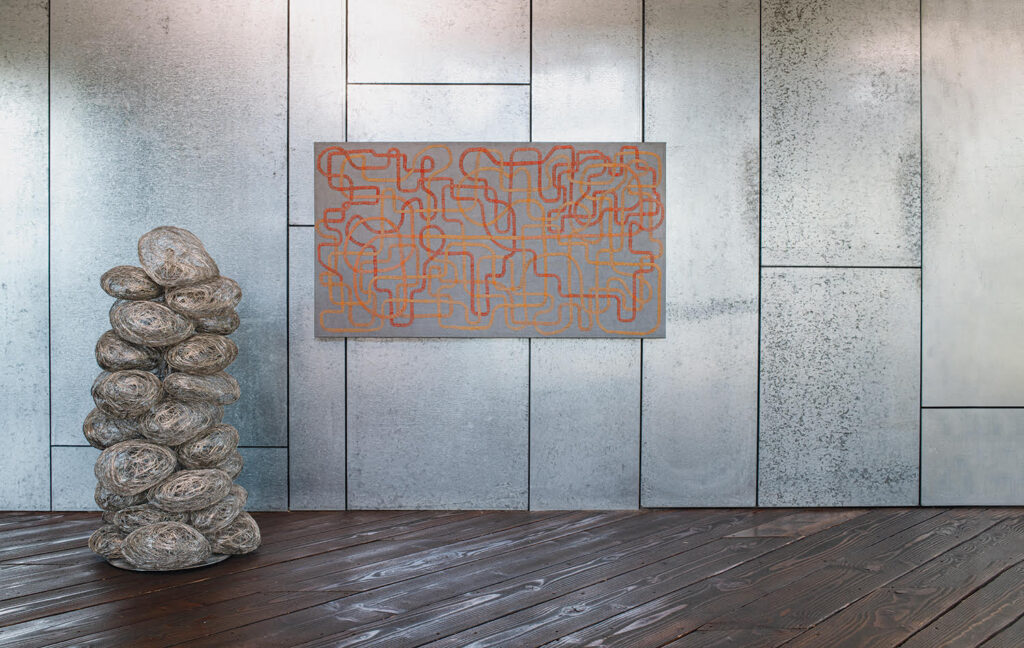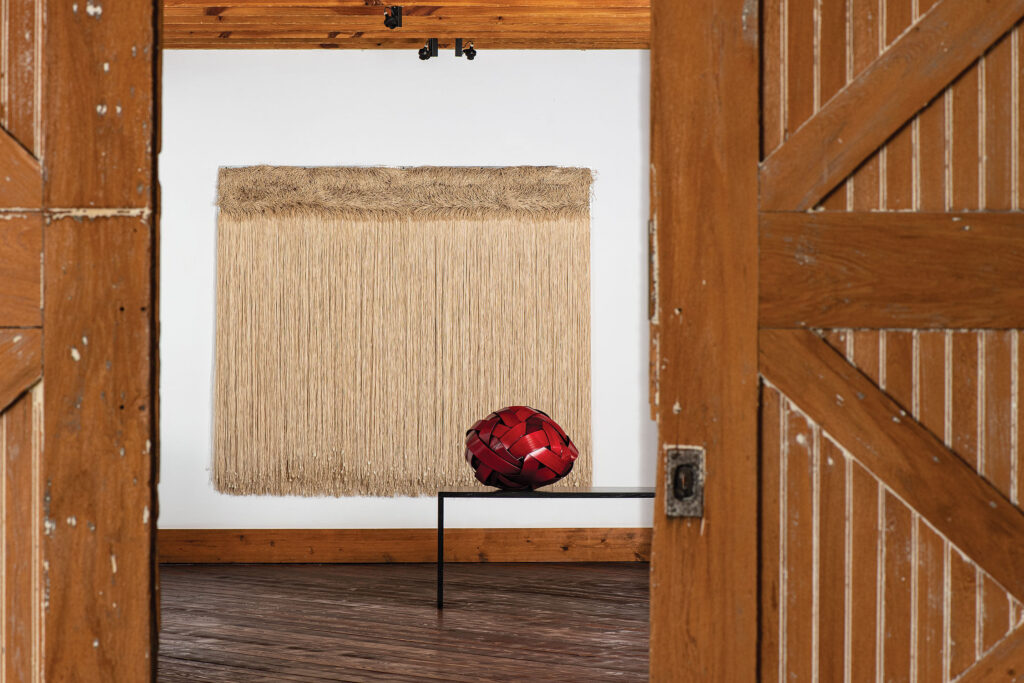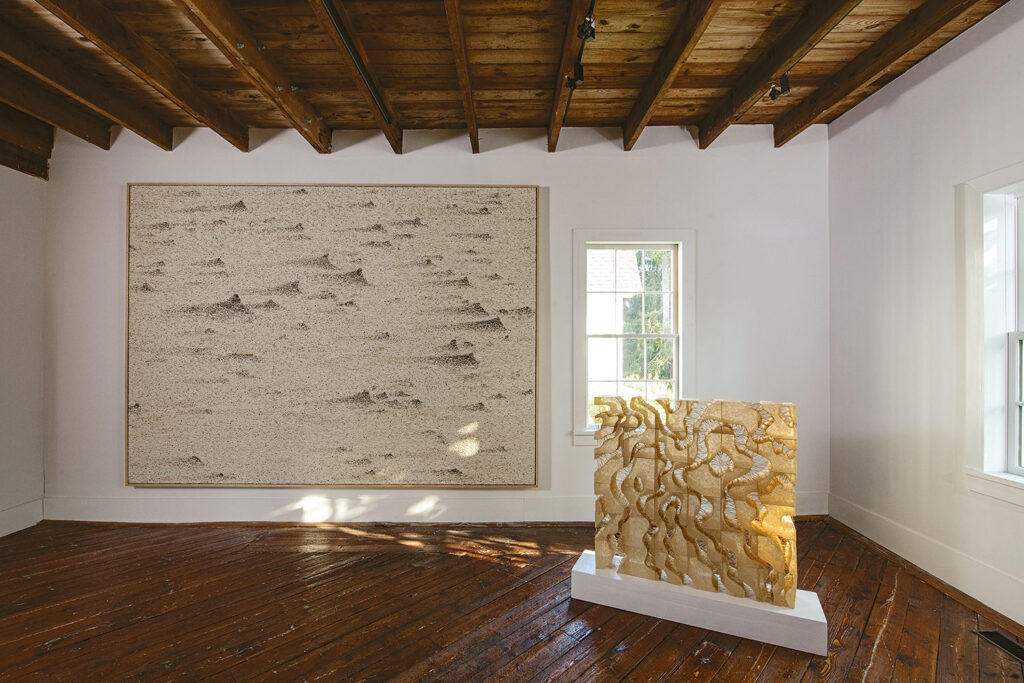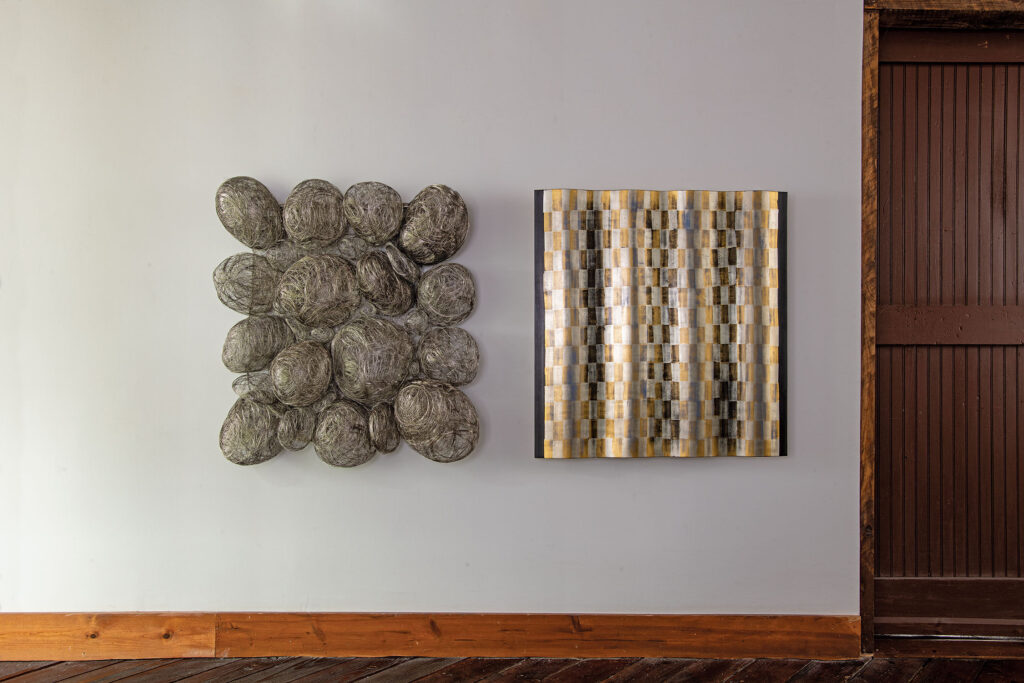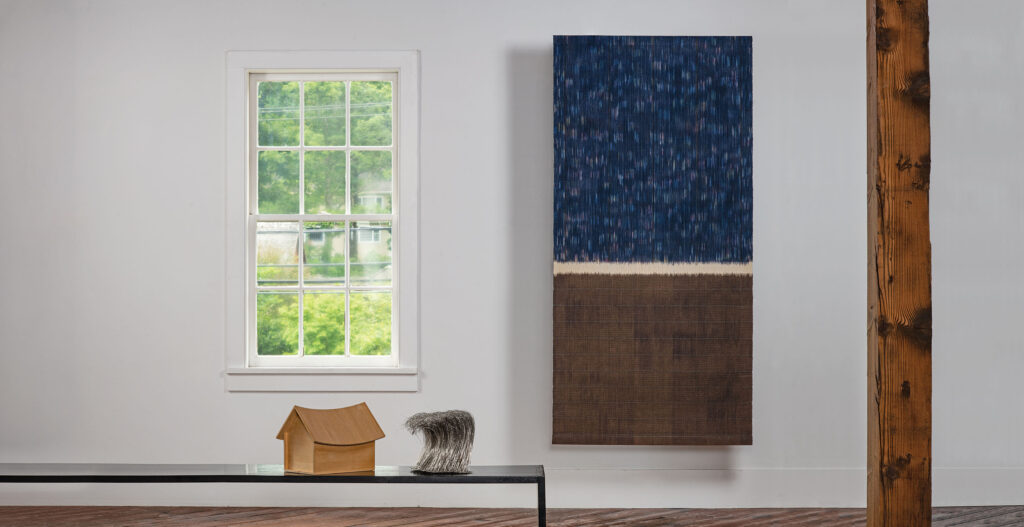
The similarity between Scandinavian and Japanese aesthetics is easily recognized. It is not only a distinctive simplicity and a respect to craftsmanship, to nature, and to materials, but also historic interchange between the two cultures, which is rooted in the late 19th century. Look, for example, at the iconic Hotel Okura, designed by Toshiro Taniguchi in 1962, and considered one of the world’s most beloved modernist hotels. It has famously hosted every American president since Richard Nixon, and has been mistakenly thought to be furnished with Scandinavian pieces. The furnishings indeed look Nordic, but they were designed in Japan. Misunderstandings such as this are commonplace. The cross influences between the Nordic and Japanese cultures, as seen in contemporary fiber art, are at the core of the new exhibition, ‘Japandi: Shared Aesthetics and Influences,’ on view at browngrotta arts in Wilton, CT.
I visited the gallery for the first time last week. The gallery has been dedicated to contemporary fiber art since its foundation in the 1980s, and is situated in an expanded historic farm house, which is also the home of its founders, Rhonda Brown and Tom Grotta. It is certainly a special place—one of a kind—where you can see works of decorative arts installed in a domestic context. The home, a former barn, was built in the late 19th century and was expanded to include 3,500 square feet of combined living-gallery space, surrounded by the most beautiful raw New England landscape. In this magical place, a passionate husband-wife team have been holding exhibitions dedicated to fiber art, and have provided the only such platform dedicated to the field, in paper, wood, linen, steel, baskets, bamboo, woven wood. The field of fiber art, I have learned during my visit, has gone far beyond woven textiles.
In many ways, they have defined the field and have advanced and developed the gallery from an extraordinary knowledge of all of the artists working in fiber. There is something humane and intimate about fiber art, as it is soft, inviting, and usually reveals the process of the craftsmanship. The exhibition includes works by artists from Norway, Finland, Denmark, Sweden, and Japan, all devoting their artistic careers to fiber art, many of them having come to the forefront of the field, have achieved great success, represented in museum collections.
As you walk into the exhibit, you see a spectacular view through the fragile pieces hung at the entrance. The theme explores not just the shared aesthetics, but the way in which the work is inspired by the heritage, tradition, and memory. Japandi, we learn, is a style, which fuses Japanese and Scandinavian aesthetics, illuminating the similarities, and exploring the differences. The exhibition could not have been that magical absent the setting. Some of my favorite pieces include work in steel fiber by Japanese designer Kyoko Kumai; Danish Brigit Birkkjaer’s work in tatami paper yarn, inspired by objects of the Viking Age; and bamboo sculptures by Jiro Yonezawa. I wish ceramics were not included in the show, as they are confusing and draw the show away from its core mission.
Take the train and go to the countryside, visit browngrotta arts, where you will enjoy a unique design experience in the temple of fiber art. Address: 276 Ridgefield Road Wilton, CT 06897; general opening: Saturday, September 25th, 11AM to 6PM.; All photos by Tom Grotta.
